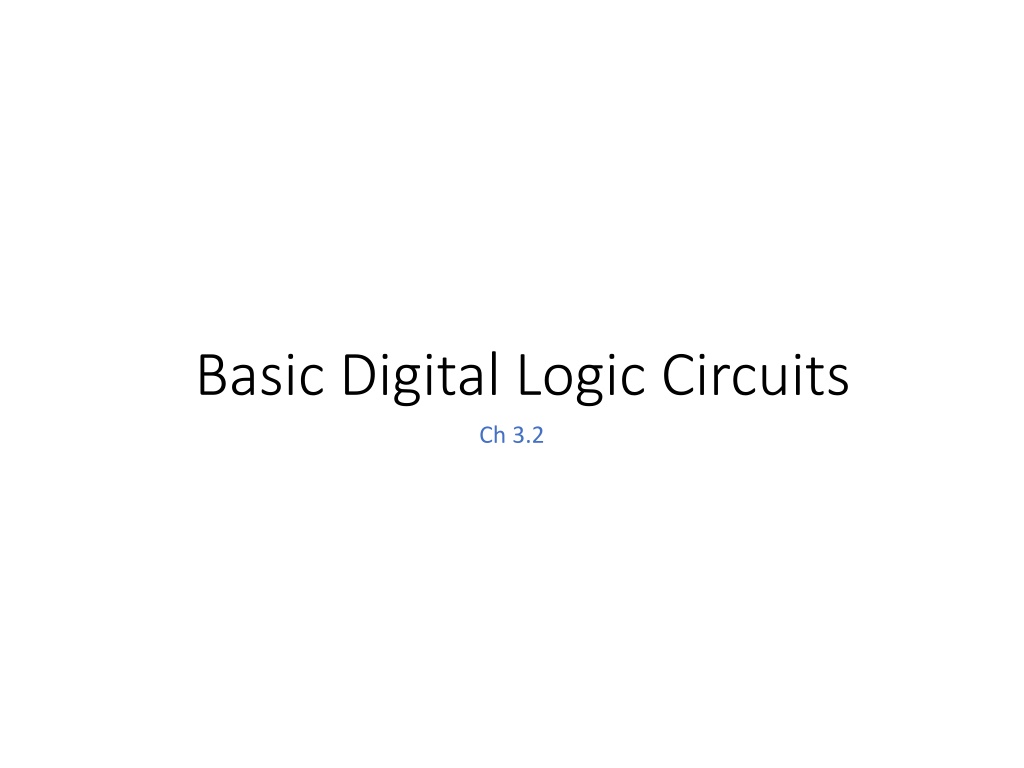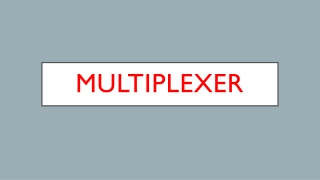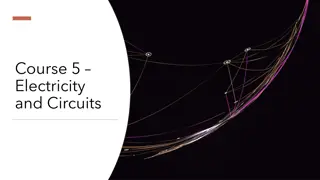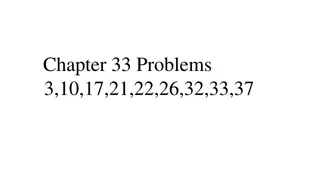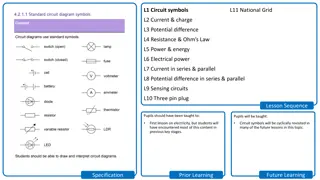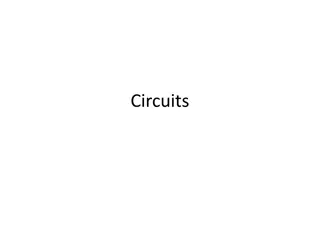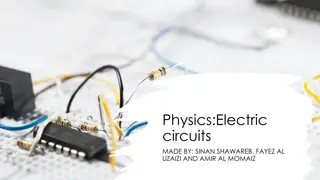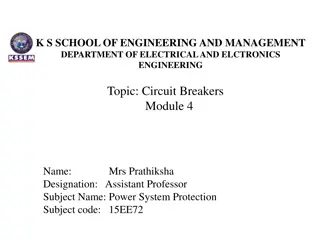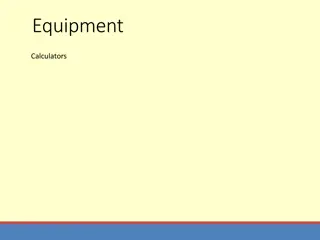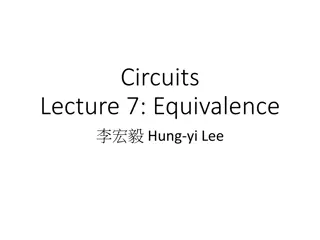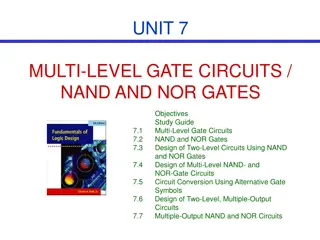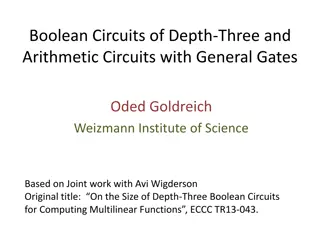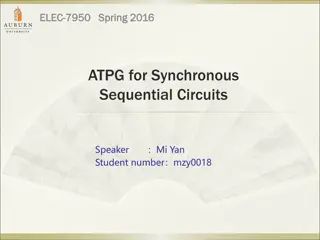Integrated Circuits and Multiplexer Circuit
World of integrated circuits (ICs) made from silicon, containing circuits with gates for computations. Learn about different IC packages like DIP, PGA, and LGA. Understand the functionality of a multiplexer circuit with data and control inputs. Discover examples of using multiplexers for computing complex Boolean functions. Explore other circuits like Decoder and Comparator for logic operations in digital circuits.
Download Presentation

Please find below an Image/Link to download the presentation.
The content on the website is provided AS IS for your information and personal use only. It may not be sold, licensed, or shared on other websites without obtaining consent from the author.If you encounter any issues during the download, it is possible that the publisher has removed the file from their server.
You are allowed to download the files provided on this website for personal or commercial use, subject to the condition that they are used lawfully. All files are the property of their respective owners.
The content on the website is provided AS IS for your information and personal use only. It may not be sold, licensed, or shared on other websites without obtaining consent from the author.
E N D
Presentation Transcript
Basic Digital Logic Circuits Ch 3.2
Integrated Circuits (ICs or chips) Normally made from silicon Contains circuits with gates to carry out computations Input and output is through pins ICs can be very simple (compute a single Boolean function) or very complicated (CPU) For complicated ICs, certain input pins are control points which specify which circuitry to use for the computation Common types of integrated-circuit packages, including (a) a dual-inline package (DIP), (b) pin grid array (PGA), and (c) land grid array (LGA). Combinatorial circuit: circuit whose output only depends on the input, and not stored values 2
Multiplexer Circuit with 2? data inputs, n control inputs, and one output Control input pattern selects one of the data inputs Uses: 1. Parallel to series conversion Apply the data inputs and then cycle through all control input combinations to send each of the data inputs to the output one at a time 2. Compute arbitrary Boolean function Example Boolean function of 3 variables 3 control bits, 8 data bits Each data bit represents one row s output from the truth table Each control bit represents one variable 3 Ex: An eight-input multiplexer circuit.
Multiplexer Example: Compute Majority Function The same 8-input multiplexer wired to compute the majority function of 3 variables. Truth table for the majority function The wired eight-input multiplexer 4
Other circuits Multiplexer Demultiplexer Inverse of a multiplexer A single input is routed to one of the 2? outputs, depending on the values of the n control lines Decoder Comparator Shifter Adder ALU Clock 5
Decoder (Fig 3-13) n input bits, 2?output bits Exactly 1 of the outputs is 1, the rest 0 Which output is 1 is determined by the input bits A 3-to-8 decoder circuit 6
Comparator (Fig 3-14) Compares two input words, producing a 1 if they are equal and a 0 otherwise A simple 4-bit comparator 7
Shifter (Fig 3-15) C determines direction (0 for left, 1 for right) When C = 0, a 0 is inserted into bit 7 (S7) & the left pair of AND gates are activated When C = 1, a 0 is inserted into bit 0 (S0) & the right pair of AND gates are activated A 1-bit left/right shifter. 8
Half-Adder (Fig 3-16) Goal: Add A+B Output: Sum and Carry A circuit for a half adder. Truth table for 1-bit addition. Adequate for summing low-order bits of two multi-bit input words, but not for a bit position in the middle of the word because it doesn t handle the carry into the position from the right. 9
Full-Adder (Fig 3-17) Goal: Add A+B, taking into consideration an input carry Output: Sum and Carry Truth table for a full adder. A circuit for a full adder. 10
ALU Arithmetic Logic Unit (Fig 3-18) Goal: Add A+B, taking into consideration an input carry Output: Sum and Carry A 1 bit ALU 11
Clock (Fig 3-20) Provides synchronization. The time interval between corresponding edges of two connective pulses is known as the clock cycle time Clocks are symmetric (equal time high & equal time low) (a) A clock. (b) The timing diagram for the clock. (c) Generation of an asymmetric clock by combining clock signals from A and B 12
In-class The ALU of figure 3-19 is capable of doing 8-bit 2's complement additions. Is it also capable of doing 2's complement subtractions? If so, explain how. If not, how would you modify it to be able to do subtractions? Fig 3-19: Eight 1-bit ALU slices connected to make an 8-bit ALU. The enables and invert signals are not shown for simplicity. The INC signal is useful only for addition operations. When present, it increments (i.e., adds 1 to) the result, making it possible to compute sums like A+1 and A+B+1 A common chip is a 4-bit adder. Four of these chips can be hooked up to form a 16-bit adder. How many pins would you expect the 4-bit adder chip to have? Why? 13
